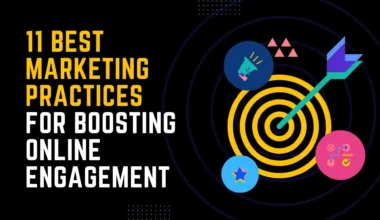Let’s learn some interesting facts about digital marketing ROI and why calculating it is essential for a successful business.
What is Digital Marketing ROI?
Digital Marketing ROI is a popular way to measure the success and loss of your digital marketing campaigns. Businesses basically use this formula to measure the revenue and growth of their business against whatever they spend on their marketing campaigns. Digital marketing ROI informs them about their strategies’ potential and whether they are spending on the right techniques or need to improve their strategies.
Similarly, they can measure how much marketing techniques contribute to generating more profit. If the ROI is positive, it means you earn more than you spend on your marketing strategies. Let’s see further how to measure ROI and what marketing analytics tools effectively measure digital marketing ROI.
How to Measure Digital Marketing ROI?
You can use the following formula to determine your investment return. It is quite simple to use this formula. You have to find out the net profit and the total investment you put into marketing, divide them by each other, and then multiply by 100.
However, there are some other metrics that you can use to measure digital marketing ROI in case you do not know your net profit. For example, see the following formula.
You can see different metrics used in this formula, let’s understand them one by one:
- Number of Leads: A lead is normally a person or potential buyer who shows interest in your product or services. Marketers can measure the number of leads they gain during their marketing campaigns.
- Leads to Customer Percentage: Then you should know how many leads turned into buyers or customers. For example, you got 100 leads in a marketing campaign. Out of 100 leads, 30 people bought your product or service. So your leads to customer percentage would be 30%.
- Order Size and Value: Then, you have to measure the size of orders customers are placing or their average value. It’s simple: you have to see what the average amount customers spend when they make an order.
- Cost of Marketing: Finally, you should know the overall cost of marketing campaigns. This cost includes all the spending on marketing services, tools, ads, and employees that you hire for digital marketing.
Metrics to Calculate Digital Marketing ROI
There are two primary metrics to measure the ROI: the overall cost and the result you gain during the marketing campaign. There are some other metrics, too, that you should use to find the right value for digital marketing ROI. See the following to learn about these metrics.
- Cost Per Head: If you are running a campaign to get more leads you should know the cost of each lead. For example how much you spend to generate each lead and then compare it to the worth of the lead to see if you get a positive outcome or not. If the cost you spend to generate the lead is more than the profit you generate by closing the lead, it would show a negative ROI. Similarly, if you generate more profit by spending less cost on a lead, it would show a positive ROI.
- Cost Per Acquisition: Several marketers work on the concept of cost per acquisition (CPA), where they set goals and budget to pay for lead generation and sales. CPA is the amount that a company spends on sales. The formula to find CPA is as follows.
- Lead Close Rate: It is one of the crucial metrics to find out digital marketing ROI. The lead close rate is actually the number of leads that have converted into buyers or customers. It is important to determine the financial value of your every closed lead. You can also learn how many leads you need to generate to achieve the goal that you establish for your digital marketing and sales team. Moreover, you can get to know about the quality of your leads and how can you adjust your targets in a better way to attract more quality-based leads. Fowwling is the formula to calculate the lead close rate.
- Click Through Rate: Click-through rate or CTR is the way to calculate the cost of your paid ads, search result links, email links, and other marketing campaigns. It tells the company how many people saw their ads. If you get a negative CTR, it means you need to work on your ad strategy. See the formula to find out the click-through rate for your marketing company.
- Return on Ad Spend: It is essential to calculate how much return you earn on your ad spending to see the success of your ad campaigns. You can review how your campaigns are performing and know about the future prediction. See the following formula to find out the return on your ad spending, if the return is more than the spending your ad campaign will be successful, a negative value will show you need to improve or change your strategy to generate ad campaigns.
- Average Order Value (AOV): It is good to get a lot of orders after running a successful digital marketing campaign, however, if you want to know the actual value of these orders you can find out the real impact of your campaigns. Average order value is a key factor in finding out the accurate digital marketing ROI. See the formula for Average order value calculation.
- Customer Lifetime Value: It is essential to know about the worth of your customer or its value for your brand. For example, you can calculate how much valuable a customer can be if he remains loyal to your brand for a long time. It is very simple to find out the customer’s lifetime value by using the following formula.
Final Thoughts
Now, you must have learned a lot about different metrics to determine the digital marketing ROI. Learning about the return on your investment is essential, as it will help you design future campaigns by considering all the weak and strong points of your branding strategies.







